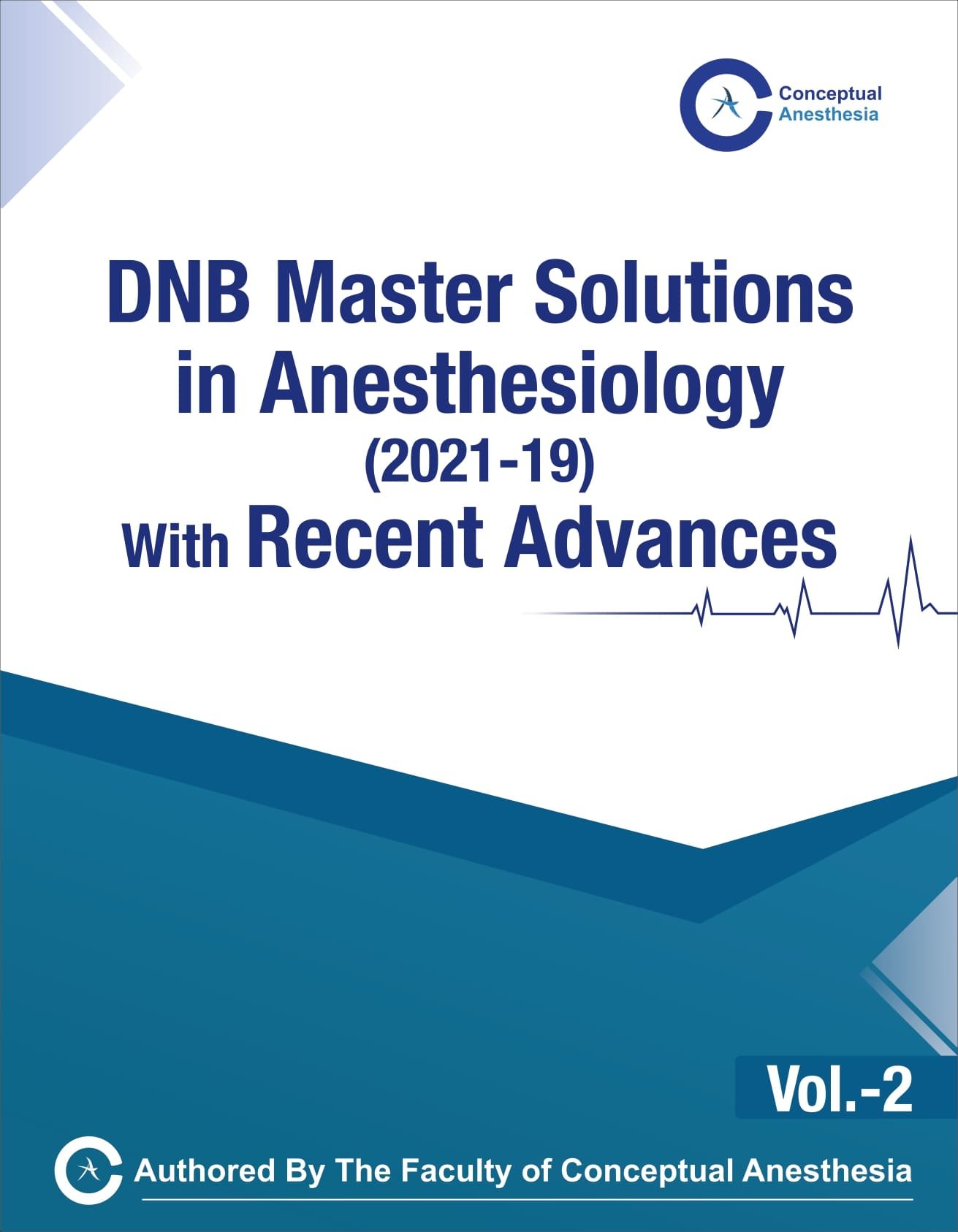
- Handbook of Drugs Used in Anesthesia & Allied Specialities
- Handbook of Instruments and Machine in Anesthesia
- Anesthesia Bank-Multiple Choice Questions
- Long Cases in Anesthesia
- Short Cases in Anaesthesiology
- DNB Master Solutions in Anesthesiology (2024 - 22) Vol. - 1
- DNB Masters Solutions in Anesthesiology (2021 - 19) with Recent Advances Vol. - 2
Handbook of Drugs Used in Anesthesia & Allied Specialities
In the world of anesthesiology and critical care, the precise and judicious use of medications is the cornerstone of our practice. Each drug we administer holds the power to shape patient outcomes, making the knowledge of pharmacology an indispensable asset for healthcare professionals.
” Handbook of Drugs Used in Anesthesia and Allied Specialties ” is an outstanding resource that fills a crucial knowledge gap, equipping postgraduate students with a comprehensive understanding of drugs used in our speciality.
This meticulously crafted handbook is an essential guide for postgraduate trainees in anesthesiology and critical care, as well as for seasoned practitioners who continuously seek to deepen their knowledge.
The commitment to providing a comprehensive resource that covers the classification, mechanism of action, pharmacokinetics, pharmacodynamics, and side effects of each drug is nothing short of commendable.
Approaching the “Handbook of Drugs Used in Anesthesia and Allied Specialities” can be an exciting and rewarding endeavour, given the treasure trove of knowledge it holds for those in the field of anesthesia.
To begin, skim through the table of contents to gain an overview of the topics covered, and note any chapters that immediately pique your interest. Reflect on your purpose for reading the handbook – whether it’s for a swift revision of key concepts or a deeper understanding of specific topics. This clarity will guide your reading and note-taking efforts as you progress through the chapters in a structured manner.
Each chapter likely focuses on a specific aspect of anesthesia and allied specialities, so read to understand core concepts, practical applications, and special considerations related to drug usage and anesthesia management. As you read, take notes on essential concepts, drug information, procedures, and noteworthy points. Highlight sections that offer insightful or novel perspectives on anesthesia practices.
While the handbook provides a wealth of information, engage in critical thinking by considering alternative approaches, potential challenges, and how concepts align with your existing knowledge.
Engage with the flowcharts and diagrams provided to enhance your understanding of complex processes and decision-making pathways in anesthesia management. Collaborate with peers and mentors, discussing the handbook’s content, sharing insights, and seeking clarification when needed.
How to Approach This Books
Approaching the “Handbook of Drugs Used in Anesthesia and Allied Specialities” can be an exciting and rewarding endeavour, given the treasure trove of knowledge it holds for those in the field of anesthesia.
To begin, skim through the table of contents to gain an overview of the topics covered, and note any chapters that immediately pique your interest. Reflect on your purpose for reading the handbook – whether it’s for a swift revision of key concepts or a deeper understanding of specific topics. This clarity will guide your reading and note-taking efforts as you progress through the chapters in a structured manner.
Each chapter likely focuses on a specific aspect of anesthesia and allied specialities, so read to understand core concepts, practical applications, and special considerations related to drug usage and anesthesia management. As you read, take notes on essential concepts, drug information, procedures, and noteworthy points. Highlight sections that offer insightful or novel perspectives on anesthesia practices.
While the handbook provides a wealth of information, engage in critical thinking by considering alternative approaches, potential challenges, and how concepts align with your existing knowledge.
Engage with the flowcharts and diagrams provided to enhance your understanding of complex processes and decision-making pathways in anesthesia management. Collaborate with peers and mentors, discussing the handbook’s content, sharing insights, and seeking clarification when needed.
Keep in mind that medical knowledge is dynamic and constantly evolving; stay open to updating your understanding as new advancements and research emerge. Embrace the call for collaboration and refinement, and allow the wisdom within the handbook to inspire your growth as a medical professional in the evolving landscape of anesthesia and medical knowledge.

Handbook of Instruments and Machine in Anesthesia
In the world of anesthesiology, the tools of our trade are the silent heroes that enable us to provide safe and effective care to our patients. A deep understanding of the instruments and equipment used in anesthesia is not just a fundamental requirement; it’s the bedrock upon which our practice stands.
“Handbook of Instruments & Machine in Anesthesia” is an invaluable resource that shines a spotlight on the often-overlooked but critically important aspects of our specialty.
This handbook is a comprehensive and meticulously crafted guide for postgraduate students in anesthesiology, designed to help them navigate the vast array of instruments and equipment with confidence and expertise. It is also an essential reference for seasoned practitioners who seek to reinforce their knowledge and stay current with the latest advancements in anesthesia technology.
What sets this handbook apart is its commitment to providing a thorough examination of a wide variety of equipment. Whether it’s endotracheal tubes, laryngeal mask airways (LMA), laryngoscopes, or regional anesthesia instruments, every aspect is covered with precision.
The inclusion of photographs adds an extra layer of clarity to the descriptions, ensuring that readers can confidently identify and understand each piece.
In the fast-paced world of healthcare, time is a precious commodity. This book’s structured format allows postgraduates to efficiently learn and revise, enhancing their ability to provide the highest standard of care. It is an excellent companion during exam preparation and a valuable reference tool in the clinical environment.
This resource will become an essential part of the journey for countless postgraduate students and experienced practitioners, ensuring that they are equipped with the knowledge and skills necessary to provide safe, effective, and compassionate care to their patients.
The anesthesia machine is a critical tool used during surgeries to keep patients safe and comfortable.
It’s essential for anyone in the field of anesthesiology to fully understand how this machine works.This book is designed to explain the ins and outs of the anesthesia machine and anesthesia equipment used daily in a way that’s easy to understand.
If you’re a student, this book is a great tool to help you get ready for exams. It breaks down complex ideas into simple terms and uses clear pictures to show how everything works. But even if you’ve been in the field for a while, this book can help refresh your memory and clarify any doubts.
As the world of anesthesia continues to change and grow, it can be challenging to keep up with all the new machines and instruments. We’ve written this book to make things a bit easier. By the time you finish reading, we hope you’ll feel more confident about using and understanding the anesthesia machine and other related equipment and answering your exams.

Anesthesia Bank-Multiple Choice Questions
“Long Cases in Anesthesia” is a remarkable and invaluable resource for postgraduate students embarking on the final leg of their journey toward becoming accomplished anesthesiologists. This comprehensive guide is a testament to the authors’ dedication to helping the next generation of anesthesiologists achieve excellence in their field.
The postgraduate exit examinations are a crucial milestone in the educational path of any medical professional, particularly for those choosing the specialized and demanding field of anesthesiology. Success in these exams is not just about passing a test; it is a reflection of one’s ability to provide safe and expert care to patients in a wide range of clinical scenarios. The long cases in these examinations are designed to evaluate a candidate’s in-depth understanding, clinical acumen, and decision-making skills.
As a seasoned anesthesiologist, I appreciate the importance of a resource like this, which focuses on the practical aspects of our speciality. It bridges the gap between theoretical knowledge and clinical practice. The tables and diagrams provide a visual roadmap for understanding each long case, enhancing the reader’s ability to formulate precise and logical responses to the scenarios presented.
In a world where time is of the essence, this book efficiently guides postgraduates through the breadth and depth of knowledge required to excel in long cases. It serves as an excellent companion during the crucial revision phase and offers a structured approach to mastering the material. The authors’ insights and explanations are not just informative but also insightful, helping postgraduates to develop the clinical reasoning skills essential for success in their exams and future practice.
The authors did exceptional work in creating this resource. Their passion for education and commitment to the growth of the field of anesthesiology are evident in every page of this book. As educators, they understand the significance of well-prepared postgraduates who are poised to provide safe, efficient, and compassionate care to their patients.
“Long Cases in Anesthesia” is a book that will undoubtedly become an indispensable tool for postgraduate students in anesthesiology.
How to Approach This Book
Welcome to “Long Cases in Anesthesia,” a comprehensive guide tailored for MD/DNB students specializing in anesthesia. This book has been meticulously crafted to provide you with in-depth knowledge and practical insights into a wide range of clinical scenarios commonly encountered during your Exams.
Start by understanding the book’s structure. The chapters have been carefully organized to cover various medical conditions and procedures relevant to anesthesia. It’s essential to have a solid foundation in the fundamentals of anesthesia, including pharmacology, physiology, and basic anesthesia techniques before delving into specific cases.
Depending on your learning objectives or clinical exposure, you may choose to read the chapters sequentially for a linear progression, or you can select cases based on your current clinical rotation or academic requirements.
Each chapter follows a consistent format, beginning with an introduction that provides the clinical context of the case. Pay close attention to the patient’s history, physical examination findings, and relevant investigations.
Evaluate in detail the anesthetic management for each case, including preoperative assessment, choice of anesthetic agents, monitoring, and specific considerations unique to the medical condition discussed in the chapter. Strive to apply the concepts you learn from this book to real-life clinical situations whenever possible.
Observing and participating in relevant cases in the operating room will significantly enhance your learning experience. Consider discussing the cases with your peers, mentors, or instructors. Collaboration and knowledge sharing can provide valuable insights and broaden your perspective on anaesthetic management.
Remember that mastering anesthesia requires both theoretical knowledge and practical skills. Stay updated with the latest research and guidelines to ensure your practice remains evidence-based. Approach each case with curiosity, dedication, and a commitment to providing safe and effective anesthesia care to your future patients. “Long Cases in Anesthesia” serves as a valuable resource to bridge the gap between classroom learning and real-world patient care.
Wishing you a successful journey through the world of anesthesia as you use this book to expand your knowledge and expertise in this critical medical field.

Long Cases in Anesthesia
Welcome to the definitive guide to mastering anesthesia.
This MCQ book is not just a collection of questions; it’s a roadmap to success for every aspiring anesthesia specialist.
Whether you’re diving into the intricacies of the subject or preparing for the super speciality entrance exams, each question has been meticulously crafted to broaden your understanding and sharpen your recall. More than just an exam tool, this book aids in building a robust foundation in anesthesia, ensuring that you’re well-equipped for both theoretical and practical challenges.
The diverse range of questions mirrors the format and complexity of major exams, ensuring that you’re always a step ahead in your preparation. With this book by your side, you’re not just preparing to pass an exam; you’re gearing up to ace it!

Short Cases in Anaesthesiology
This book is a testament to the authors’ dedication to helping the next generation of anaesthesiologists achieve excellence in their field.
Short cases in anaesthesiology are a crucial part of the postgraduate exit examinations, designed to evaluate a candidate’s in-depth understanding, clinical acumen, and decision-making skills. Success in these exams is not just about passing a test; it is a reflection of one’s ability to provide safe and expert care to patients in a wide range of clinical scenarios.
This book bridges the gap between theoretical knowledge and clinical practice, providing a structured approach to mastering the material. The authors’ insights and explanations are not just informative but also insightful, helping postgraduates to develop the clinical reasoning skills essential for success in their exams and future practice.
Authors passion for education and commitment to the growth of the field of anaesthesiology are evident in every page of this book. As educators, they understand the significance of well-prepared postgraduates who are poised to provide safe, efficient, and compassionate care to their patients.
This is a book that will undoubtedly become an indispensable tool for postgraduate students in anesthesiology.
How to Approach this Book –
This book has been meticulously crafted to provide you with in-depth knowledge and practical insights into a wide range of clinical scenarios commonly encountered during your exams.
It is essential to have a solid foundation in the fundamentals of anaesthesia, including pharmacology,
physiology, and basic anesthesia techniques before delving into specific cases.
Mastering anaesthesia requires both theoretical knowledge and practical skills. Stay updated with the latest research and guidelines to ensure your practice remains evidence-based.
Approach each case with curiosity, dedication, and a commitment to providing safe and effective anesthesia care to your future patients.
The chapters in this book are carefully organized to cover various medical conditions and procedures relevant to anaesthesia.
You can choose to read the chapters sequentially for a linear progression or select cases based on your current clinical rotation or academic requirements. Each chapter follows a consistent format, beginning with an introduction that provides the clinical context of the case. Pay close attention to the patient’s history, physical examination findings, and relevant investigations.
Evaluate details of the anesthetic management for each case, including preoperative assessment, choice of anesthetic agents, monitoring, and specific considerations unique to the medical condition discussed in the chapter.
This book is unique in its approach, with approximately half of the text presented in table form.
These tables provide a visual roadmap for understanding each short case, enhancing your ability to formulate precise and logical responses to the scenarios presented. The tables are designed to help you quickly identify key information, such as patient demographics, medical history, and anesthetic management strategies.
Observing and participating in relevant cases in the operating room will significantly enhance your learning experience. Try to apply the concepts you learn from this book to real-life clinical situations whenever possible.
Consider discussing the cases with your peers, mentors, or instructors. Collaboration and knowledge sharing can provide valuable insights and broaden your perspective on anaesthetic management.
This Book serves as a valuable resource to bridge the gap between classroom learning
and real-world patient care. Wishing you a successful journey through the world of anesthesia as you use this book to expand your knowledge and expertise in this critical medical field.
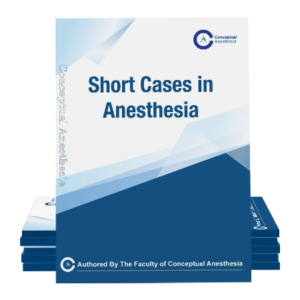
DNB Master Solutions in Anesthesiology (2024 – 22) Vol. – 1
As the field of anesthesiology continues to evolve with rapid advancements in technology and research, the importance of comprehensive and rigorous training for future anesthesiologists cannot be overstated. The Diplomate of National Board (DNB) Anesthesiology exam is a critical milestone in the journey of every aspiring anesthesiologist in India. Success in this exam not only requires a deep understanding of the core principles of anesthesia but also the ability to apply this knowledge in a clinical context. This book, “DNB Master Solutions,” is a meticulously crafted resource designed to guide students through the intricacies of the DNB exam.
It aims to bridge the gap between theoretical knowledge and practical application, providing a solid foundation for students to excel in their exams and, ultimately, in their professional careers.
How to Approach this Book –
This book is structured to provide a comprehensive guide to mastering the DNB Anesthesiology exam.
Here is a suggested approach to make the most of this resource:
- Familiarize Yourself with the Exam Format: Begin by understanding the structure of the DNB Anesthesiology exam. Knowing the types of questions, the marking scheme, and the areas of focus will help you tailor your study plan effectively.
- Systematic Study: Tackle each section of the book methodically. Start with the topics you find most challenging, as this will give you more time to understand and absorb the material.
- Practice Regularly: Regular practice is key to success. Use the model questions provided to test your knowledge and identify areas that need further review. Time yourself to simulate exam conditions and improve your time management skills.
- Review and Reflect: After attempting the questions, carefully review the answers and explanations. Reflect on any mistakes and ensure you understand the rationale behind the correct answers.
- Utilize Additional Resources: While this book is comprehensive, supplementing your study with additional textbooks, journals, and online resources can provide a broader understanding of complex topics.
- Group Study and Discussion: Studying in groups can be highly beneficial. Discussing questions and answers with peers can provide new insights and reinforce your understanding.
- Seek Guidance: Do not hesitate to seek guidance from mentors and senior colleagues. Their experience and expertise can provide valuable perspectives and tips.
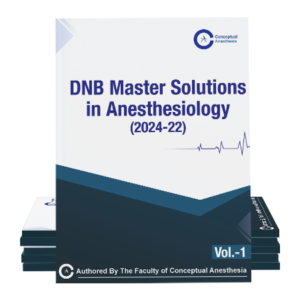
DNB Masters Solutions in Anesthesiology (2021 – 19) with Recent Advances Vol. – 2
As the field of anesthesiology continues to evolve with rapid advancements in technology and research, the importance of comprehensive and rigorous training for future anesthesiologists cannot be overstated.
The Diplomate of National Board (DNB) Anesthesiology exam is a critical milestone in the journey of every aspiring anesthesiologist in India. Success in this exam not only requires a deep understanding of the core principles of anesthesia but also the ability to apply this knowledge in a clinical context.
This book, “DNB Master Solutions,” is a meticulously crafted resource designed to guide students through the intricacies of the DNB exam. It aims to bridge the gap between theoretical knowledge and practical application, providing a solid foundation for students to excel in their exams and, ultimately, in their professional careers.
How to Approach this Book –
This book is structured to provide a comprehensive guide to mastering the DNB Anesthesiology exam.
Here is a suggested approach to make the most of this resource:
- Familiarize Yourself with the Exam Format: Begin by understanding the structure of the DNB Anesthesiology exam. Knowing the types of questions, the marking scheme, and the areas of focus will help you tailor your study plan effectively.
- Systematic Study: Tackle each section of the book methodically. Start with the topics you find most challenging, as this will give you more time to understand and absorb the material.
- Practice Regularly: Regular practice is key to success. Use the model questions provided to test your knowledge and identify areas that need further review. Time yourself to simulate exam conditions and improve your time management skills.
- Review and Reflect: After attempting the questions, carefully review the answers and explanations. Reflect on any mistakes and ensure you understand the rationale behind the correct answers.
- Utilize Additional Resources: While this book is comprehensive, supplementing your study with additional textbooks, journals, and online resources can provide a broader understanding of complex topics.
- Group Study and Discussion: Studying in groups can be highly beneficial. Discussing questions and answers with peers can provide new insights and reinforce your understanding.
- Seek Guidance: Do not hesitate to seek guidance from mentors and senior colleagues. Their experience and expertise can provide valuable perspectives and tips.
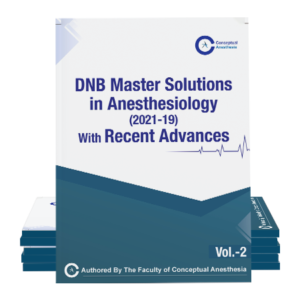
Delivery Disclaimer :
The delivery of the books might get impacted from October 27th to November 10th due to the upcoming festive season and other disruptions, as communicated by the courier team. Please be assured that we are doing everything possible to ensure timely delivery.
In the world of anesthesiology and critical care, the precise and judicious use of medications is the cornerstone of our practice. Each drug we administer holds the power to shape patient outcomes, making the knowledge of pharmacology an indispensable asset for healthcare professionals.
” Handbook of Drugs Used in Anesthesia and Allied Specialties ” is an outstanding resource that fills a crucial knowledge gap, equipping postgraduate students with a comprehensive understanding of drugs used in our speciality.
This meticulously crafted handbook is an essential guide for postgraduate trainees in anesthesiology and critical care, as well as for seasoned practitioners who continuously seek to deepen their knowledge.
The commitment to providing a comprehensive resource that covers the classification, mechanism of action, pharmacokinetics, pharmacodynamics, and side effects of each drug is nothing short of commendable.
How to Approach This Books
Approaching the “Handbook of Drugs Used in Anesthesia and Allied Specialities” can be an exciting and rewarding endeavour, given the treasure trove of knowledge it holds for those in the field of anesthesia.
To begin, skim through the table of contents to gain an overview of the topics covered, and note any chapters that immediately pique your interest. Reflect on your purpose for reading the handbook – whether it’s for a swift revision of key concepts or a deeper understanding of specific topics. This clarity will guide your reading and note-taking efforts as you progress through the chapters in a structured manner.
Each chapter likely focuses on a specific aspect of anesthesia and allied specialities, so read to understand core concepts, practical applications, and special considerations related to drug usage and anesthesia management. As you read, take notes on essential concepts, drug information, procedures, and noteworthy points. Highlight sections that offer insightful or novel perspectives on anesthesia practices.
While the handbook provides a wealth of information, engage in critical thinking by considering alternative approaches, potential challenges, and how concepts align with your existing knowledge.
Engage with the flowcharts and diagrams provided to enhance your understanding of complex processes and decision-making pathways in anesthesia management. Collaborate with peers and mentors, discussing the handbook’s content, sharing insights, and seeking clarification when needed.
Keep in mind that medical knowledge is dynamic and constantly evolving; stay open to updating your understanding as new advancements and research emerge. Embrace the call for collaboration and refinement, and allow the wisdom within the handbook to inspire your growth as a medical professional in the evolving landscape of anesthesia and medical knowledge.

In the world of anesthesiology, the tools of our trade are the silent heroes that enable us to provide safe and effective care to our patients. A deep understanding of the instruments and equipment used in anesthesia is not just a fundamental requirement; it’s the bedrock upon which our practice stands.
“Handbook of Instruments & Machine in Anesthesia” is an invaluable resource that shines a spotlight on the often-overlooked but critically important aspects of our specialty.
This handbook is a comprehensive and meticulously crafted guide for postgraduate students in anesthesiology, designed to help them navigate the vast array of instruments and equipment with confidence and expertise. It is also an essential reference for seasoned practitioners who seek to reinforce their knowledge and stay current with the latest advancements in anesthesia technology.
What sets this handbook apart is its commitment to providing a thorough examination of a wide variety of equipment. Whether it’s endotracheal tubes, laryngeal mask airways (LMA), laryngoscopes, or regional anesthesia instruments, every aspect is covered with precision.
The inclusion of photographs adds an extra layer of clarity to the descriptions, ensuring that readers can confidently identify and understand each piece.
In the fast-paced world of healthcare, time is a precious commodity. This book’s structured format allows postgraduates to efficiently learn and revise, enhancing their ability to provide the highest standard of care. It is an excellent companion during exam preparation and a valuable reference tool in the clinical environment.
This resource will become an essential part of the journey for countless postgraduate students and experienced practitioners, ensuring that they are equipped with the knowledge and skills necessary to provide safe, effective, and compassionate care to their patients.
The anesthesia machine is a critical tool used during surgeries to keep patients safe and comfortable.
It’s essential for anyone in the field of anesthesiology to fully understand how this machine works.This book is designed to explain the ins and outs of the anesthesia machine and anesthesia equipment used daily in a way that’s easy to understand.
If you’re a student, this book is a great tool to help you get ready for exams. It breaks down complex ideas into simple terms and uses clear pictures to show how everything works. But even if you’ve been in the field for a while, this book can help refresh your memory and clarify any doubts.
As the world of anesthesia continues to change and grow, it can be challenging to keep up with all the new machines and instruments. We’ve written this book to make things a bit easier. By the time you finish reading, we hope you’ll feel more confident about using and understanding the anesthesia machine and other related equipment and answering your exams.

Welcome to the definitive guide to mastering anesthesia.
This MCQ book is not just a collection of questions; it’s a roadmap to success for every aspiring anesthesia specialist.
Whether you’re diving into the intricacies of the subject or preparing for the super speciality entrance exams, each question has been meticulously crafted to broaden your understanding and sharpen your recall. More than just an exam tool, this book aids in building a robust foundation in anesthesia, ensuring that you’re well-equipped for both theoretical and practical challenges.
The diverse range of questions mirrors the format and complexity of major exams, ensuring that you’re always a step ahead in your preparation. With this book by your side, you’re not just preparing to pass an exam; you’re gearing up to ace it!

“Long Cases in Anesthesia” is a remarkable and invaluable resource for postgraduate students embarking on the final leg of their journey toward becoming accomplished anesthesiologists. This comprehensive guide is a testament to the authors’ dedication to helping the next generation of anesthesiologists achieve excellence in their field.
The postgraduate exit examinations are a crucial milestone in the educational path of any medical professional, particularly for those choosing the specialized and demanding field of anesthesiology. Success in these exams is not just about passing a test; it is a reflection of one’s ability to provide safe and expert care to patients in a wide range of clinical scenarios. The long cases in these examinations are designed to evaluate a candidate’s in-depth understanding, clinical acumen, and decision-making skills.
As a seasoned anesthesiologist, I appreciate the importance of a resource like this, which focuses on the practical aspects of our speciality. It bridges the gap between theoretical knowledge and clinical practice. The tables and diagrams provide a visual roadmap for understanding each long case, enhancing the reader’s ability to formulate precise and logical responses to the scenarios presented.
In a world where time is of the essence, this book efficiently guides postgraduates through the breadth and depth of knowledge required to excel in long cases. It serves as an excellent companion during the crucial revision phase and offers a structured approach to mastering the material. The authors’ insights and explanations are not just informative but also insightful, helping postgraduates to develop the clinical reasoning skills essential for success in their exams and future practice.
The authors did exceptional work in creating this resource. Their passion for education and commitment to the growth of the field of anesthesiology are evident in every page of this book. As educators, they understand the significance of well-prepared postgraduates who are poised to provide safe, efficient, and compassionate care to their patients.
“Long Cases in Anesthesia” is a book that will undoubtedly become an indispensable tool for postgraduate students in anesthesiology.
How to Approach This Book
Welcome to “Long Cases in Anesthesia,” a comprehensive guide tailored for MD/DNB students specializing in anesthesia. This book has been meticulously crafted to provide you with in-depth knowledge and practical insights into a wide range of clinical scenarios commonly encountered during your Exams.
Start by understanding the book’s structure. The chapters have been carefully organized to cover various medical conditions and procedures relevant to anesthesia. It’s essential to have a solid foundation in the fundamentals of anesthesia, including pharmacology, physiology, and basic anesthesia techniques before delving into specific cases.
Depending on your learning objectives or clinical exposure, you may choose to read the chapters sequentially for a linear progression, or you can select cases based on your current clinical rotation or academic requirements.
Each chapter follows a consistent format, beginning with an introduction that provides the clinical context of the case. Pay close attention to the patient’s history, physical examination findings, and relevant investigations.
Evaluate in detail the anesthetic management for each case, including preoperative assessment, choice of anesthetic agents, monitoring, and specific considerations unique to the medical condition discussed in the chapter. Strive to apply the concepts you learn from this book to real-life clinical situations whenever possible.
Observing and participating in relevant cases in the operating room will significantly enhance your learning experience. Consider discussing the cases with your peers, mentors, or instructors. Collaboration and knowledge sharing can provide valuable insights and broaden your perspective on anaesthetic management.
Remember that mastering anesthesia requires both theoretical knowledge and practical skills. Stay updated with the latest research and guidelines to ensure your practice remains evidence-based. Approach each case with curiosity, dedication, and a commitment to providing safe and effective anesthesia care to your future patients. “Long Cases in Anesthesia” serves as a valuable resource to bridge the gap between classroom learning and real-world patient care.
Wishing you a successful journey through the world of anesthesia as you use this book to expand your knowledge and expertise in this critical medical field.

This book is a testament to the authors’ dedication to helping the next generation of anaesthesiologists achieve excellence in their field.
Short cases in anaesthesiology are a crucial part of the postgraduate exit examinations, designed to evaluate a candidate’s in-depth understanding, clinical acumen, and decision-making skills. Success in these exams is not just about passing a test; it is a reflection of one’s ability to provide safe and expert care to patients in a wide range of clinical scenarios.
This book bridges the gap between theoretical knowledge and clinical practice, providing a structured approach to mastering the material. The authors’ insights and explanations are not just informative but also insightful, helping postgraduates to develop the clinical reasoning skills essential for success in their exams and future practice.
Authors passion for education and commitment to the growth of the field of anaesthesiology are evident in every page of this book. As educators, they understand the significance of well-prepared postgraduates who are poised to provide safe, efficient, and compassionate care to their patients.
This is a book that will undoubtedly become an indispensable tool for postgraduate students in anesthesiology.
How to Approach this Book –
This book has been meticulously crafted to provide you with in-depth knowledge and practical insights into a wide range of clinical scenarios commonly encountered during your exams.
It is essential to have a solid foundation in the fundamentals of anaesthesia, including pharmacology,
physiology, and basic anesthesia techniques before delving into specific cases.
Mastering anaesthesia requires both theoretical knowledge and practical skills. Stay updated with the latest research and guidelines to ensure your practice remains evidence-based.
Approach each case with curiosity, dedication, and a commitment to providing safe and effective anesthesia care to your future patients.
The chapters in this book are carefully organized to cover various medical conditions and procedures relevant to anaesthesia.
You can choose to read the chapters sequentially for a linear progression or select cases based on your current clinical rotation or academic requirements. Each chapter follows a consistent format, beginning with an introduction that provides the clinical context of the case. Pay close attention to the patient’s history, physical examination findings, and relevant investigations.
Evaluate details of the anesthetic management for each case, including preoperative assessment, choice of anesthetic agents, monitoring, and specific considerations unique to the medical condition discussed in the chapter.
This book is unique in its approach, with approximately half of the text presented in table form.
These tables provide a visual roadmap for understanding each short case, enhancing your ability to formulate precise and logical responses to the scenarios presented. The tables are designed to help you quickly identify key information, such as patient demographics, medical history, and anesthetic management strategies.
Observing and participating in relevant cases in the operating room will significantly enhance your learning experience. Try to apply the concepts you learn from this book to real-life clinical situations whenever possible.
Consider discussing the cases with your peers, mentors, or instructors. Collaboration and knowledge sharing can provide valuable insights and broaden your perspective on anaesthetic management.
This Book serves as a valuable resource to bridge the gap between classroom learning
and real-world patient care. Wishing you a successful journey through the world of anesthesia as you use this book to expand your knowledge and expertise in this critical medical field.

“In anesthesiology, we don’t just put patients to sleep; we wake them up to a new lease on life, free of pain and discomfort.”
As the field of anesthesiology continues to evolve with rapid advancements in technology and research, the importance of comprehensive and rigorous training for future anesthesiologists cannot be overstated. The Diplomate of National Board (DNB) Anesthesiology exam is a critical milestone in the journey of every aspiring anesthesiologist in India. Success in this exam not only requires a deep understanding of the core principles of anesthesia but also the ability to apply this knowledge in a clinical context. This book, “DNB Master Solutions,” is a meticulously crafted resource designed to guide students through the intricacies of the DNB exam.
It aims to bridge the gap between theoretical knowledge and practical application, providing a solid foundation for students to excel in their exams and, ultimately, in their professional careers.
How to Approach this Book –
This book is structured to provide a comprehensive guide to mastering the DNB Anesthesiology exam.
Here is a suggested approach to make the most of this resource:
1. Familiarize Yourself with the Exam Format: Begin by understanding the structure of the DNB Anesthesiology exam. Knowing the types of questions, the marking scheme, and the areas of focus will help you tailor your study plan effectively.
2. Systematic Study: Tackle each section of the book methodically. Start with the topics you find most challenging, as this will give you more time to understand and absorb the material.
3. Practice Regularly: Regular practice is key to success. Use the model questions provided to test your knowledge and identify areas that need further review. Time yourself to simulate exam conditions and improve your time management skills.
4. Review and Reflect: After attempting the questions, carefully review the answers and explanations. Reflect on any mistakes and ensure you understand the rationale behind the correct answers.
5. Utilize Additional Resources: While this book is comprehensive, supplementing your study with additional textbooks, journals, and online resources can provide a broader understanding of complex topics.
6. Group Study and Discussion: Studying in groups can be highly beneficial. Discussing questions and answers with peers can provide new insights and reinforce your understanding.
7. Seek Guidance: Do not hesitate to seek guidance from mentors and senior colleagues. Their experience and expertise can provide valuable perspectives and tips.

“In anesthesiology, we don’t just put patients to sleep; we wake them up to a new lease on life, free of pain and discomfort.”
As the field of anesthesiology continues to evolve with rapid advancements in technology and research, the importance of comprehensive and rigorous training for future anesthesiologists cannot be overstated.
The Diplomate of National Board (DNB) Anesthesiology exam is a critical milestone in the journey of every aspiring anesthesiologist in India. Success in this exam not only requires a deep understanding of the core principles of anesthesia but also the ability to apply this knowledge in a clinical context.
This book, “DNB Master Solutions,” is a meticulously crafted resource designed to guide students through the intricacies of the DNB exam. It aims to bridge the gap between theoretical knowledge and practical application, providing a solid foundation for students to excel in their exams and, ultimately, in their professional careers.
How to Approach this Book –
This book is structured to provide a comprehensive guide to mastering the DNB Anesthesiology exam.
Here is a suggested approach to make the most of this resource:
1. Familiarize Yourself with the Exam Format: Begin by understanding the structure of the DNB Anesthesiology exam. Knowing the types of questions, the marking scheme, and the areas of focus will help you tailor your study plan effectively.
2. Systematic Study: Tackle each section of the book methodically. Start with the topics you find most challenging, as this will give you more time to understand and absorb the material.
3. Practice Regularly: Regular practice is key to success. Use the model questions provided to test your knowledge and identify areas that need further review. Time yourself to simulate exam conditions and improve your time management skills.
4. Review and Reflect: After attempting the questions, carefully review the answers and explanations. Reflect on any mistakes and ensure you understand the rationale behind the correct answers.
5. Utilize Additional Resources: While this book is comprehensive, supplementing your study with additional textbooks, journals, and online resources can provide a broader understanding of complex topics.
6. Group Study and Discussion: Studying in groups can be highly beneficial. Discussing questions and answers with peers can provide new insights and reinforce your understanding.
7. Seek Guidance: Do not hesitate to seek guidance from mentors and senior colleagues. Their experience and expertise can provide valuable perspectives and tips.

Handbook of Drugs Used in Anesthesia & Allied Specialities
For MD/DNB/DA Practical Exam Preparation

Handbook of Instruments and Machine in Anesthesia
For MD/DNB/DA Practical Exam Preparation
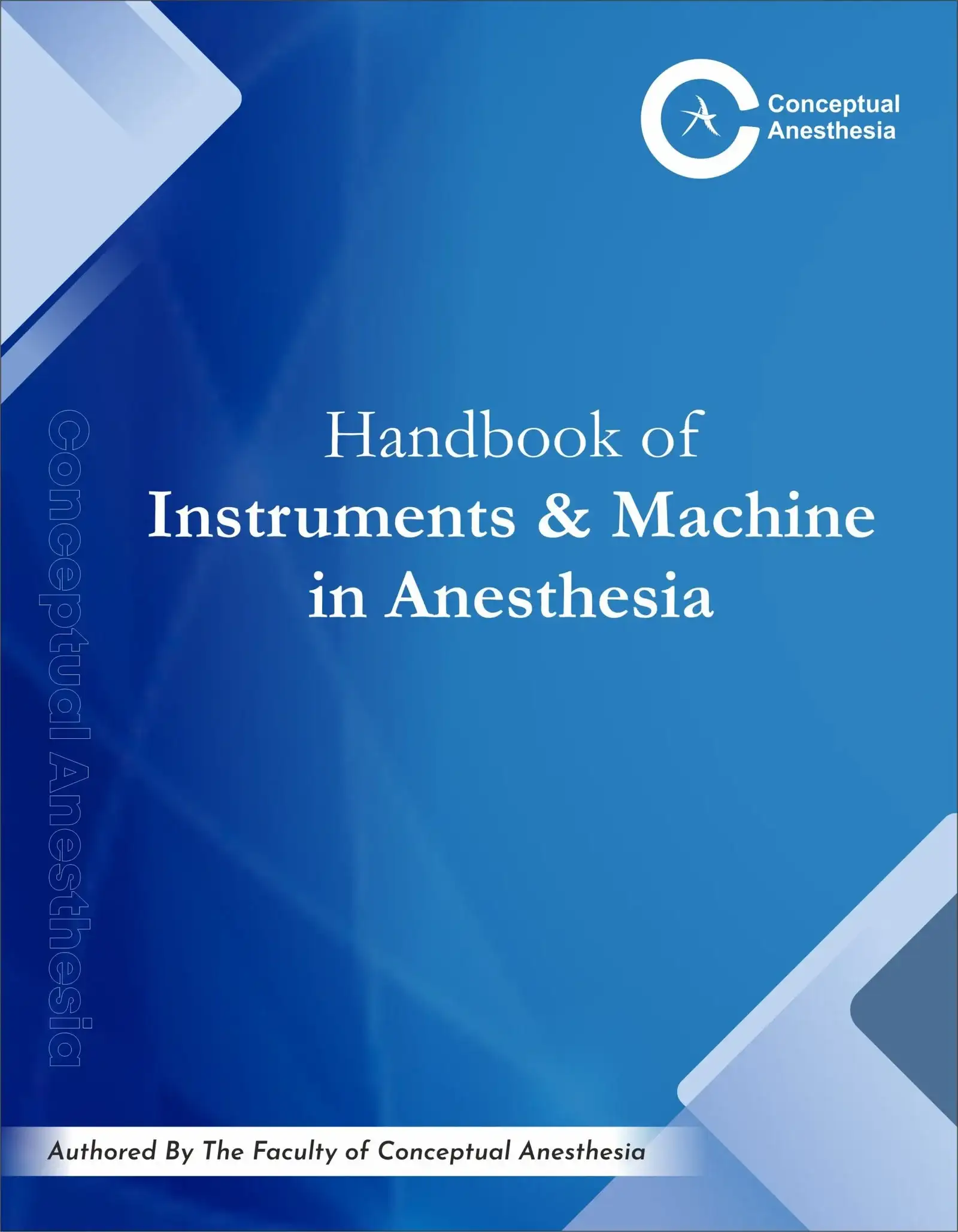

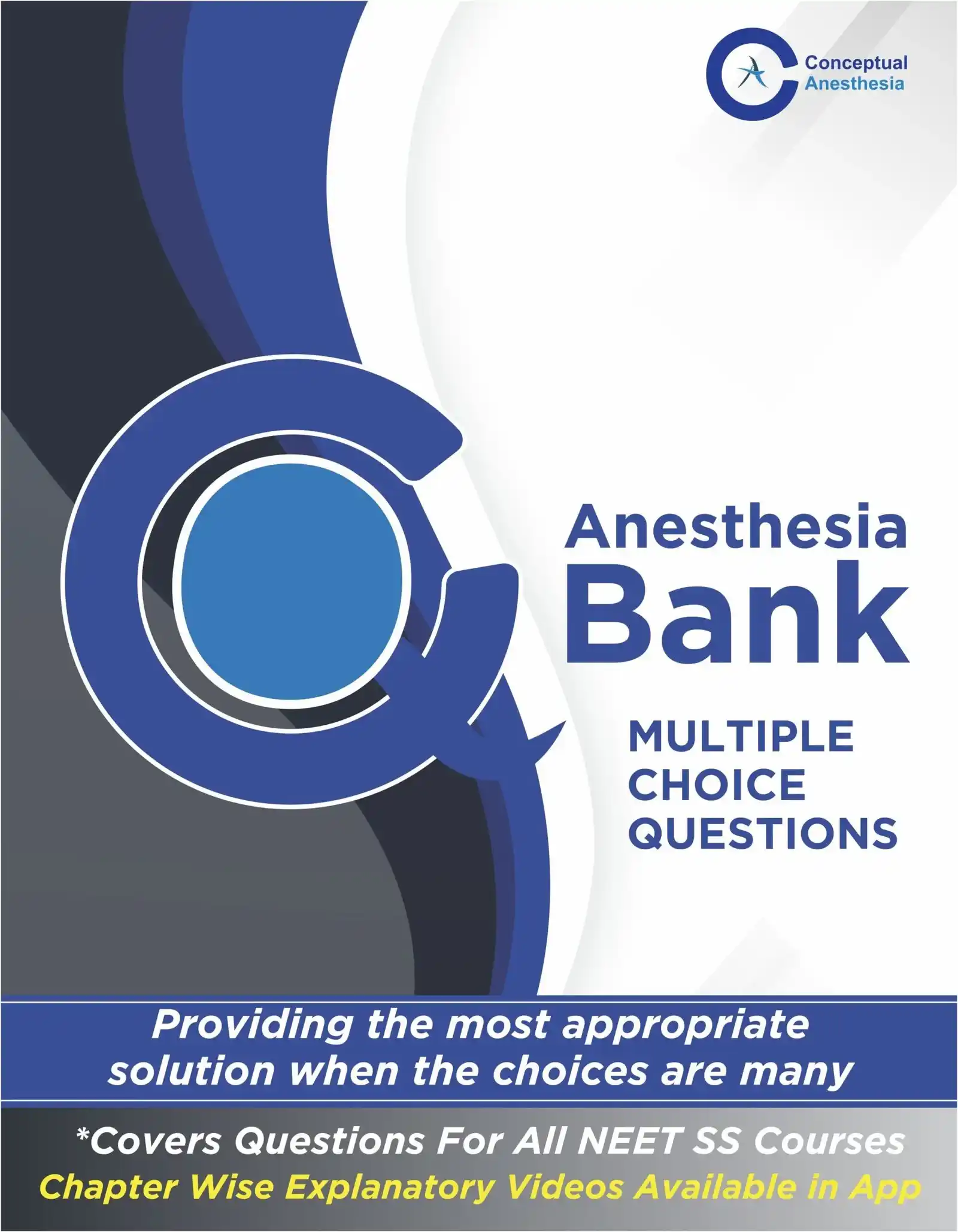

DNB Master Solutions in Anesthesiology (2024 - 22) Vol. - 1
For MD/DNB/DA Practical Exam Preparation
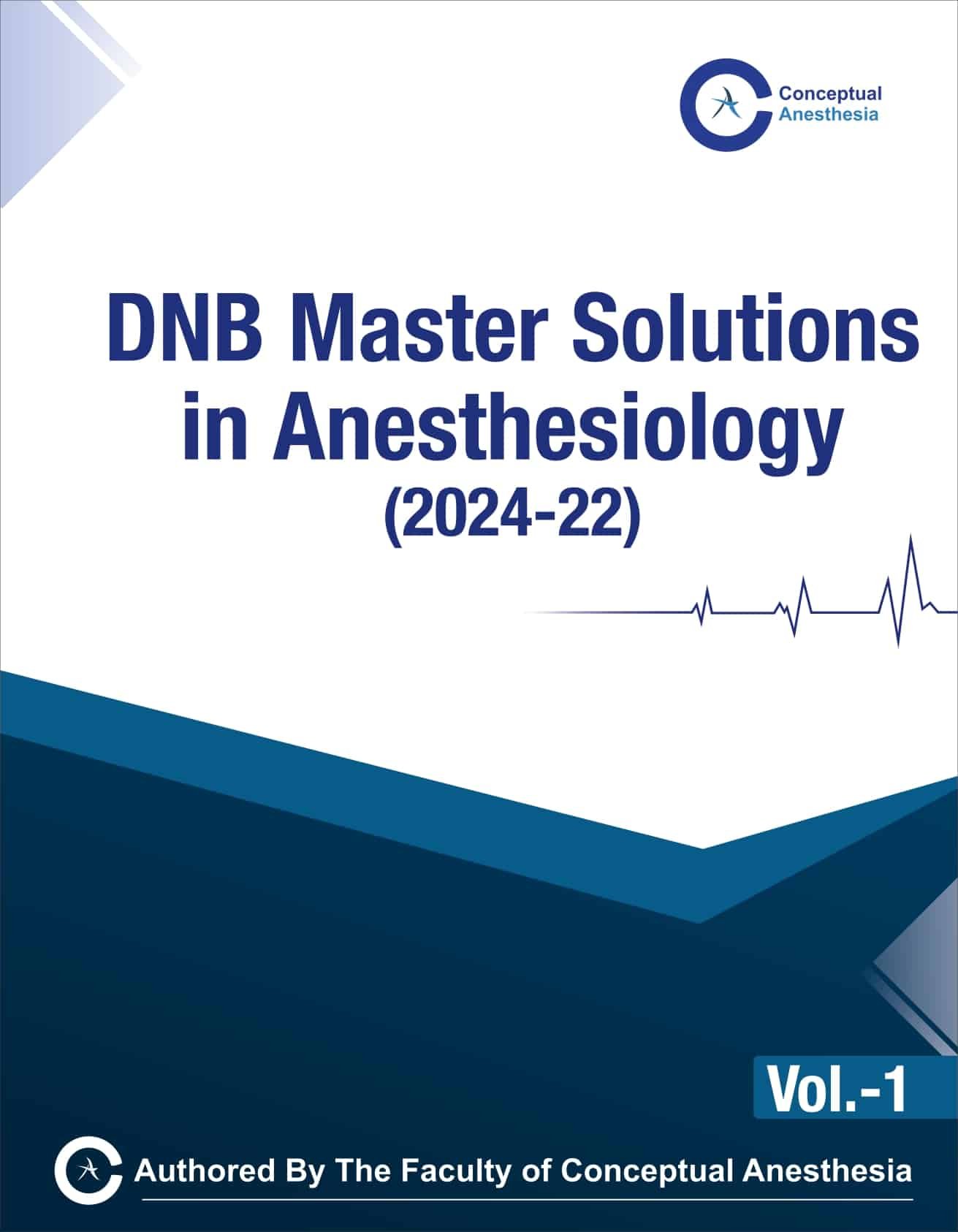
DNB Masters Solutions in Anesthesiology (2021 - 19) with Recent Advances Vol. - 2
For MD/DNB/DA Practical Exam Preparation
